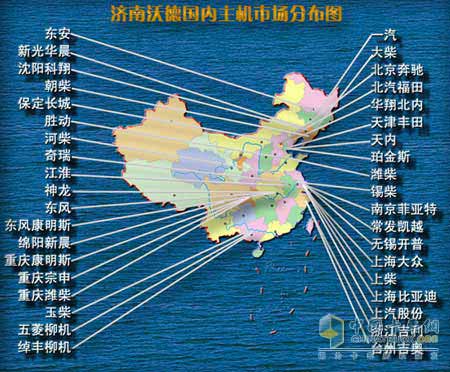In recent years, China's automobile and parts industry has maintained a good momentum of development. Even when the economic crisis spreads to a large extent across the globe, the performance of China's auto and parts and components markets continues to be the focus of global peers. Its huge consumption potential and good development characterization have become an important factor in attracting investment from many domestic and foreign auto parts and components companies. China Automobile Association expects that the total automobile sales in 2009 will exceed 10 million for the first time. Authoritative sources predict that this year the automobile industry will enter a transition period from quantity to qualitative change, and the Chinese auto industry will face an omni-directional transformation from concept to strategy, from product development to product marketing, and from the domestic market to the international market. The corresponding Chinese auto parts industry, how to follow up the transformation of the auto industry, is also a topic that the industry should face. "Doing a good job of supporting the main engine" is the first question that the parts and components company thinks. There is a saying in the parts and components industry that "If you want to be big, you have to do it." Although the importance of the current aftermarket parts and components can't be ignored, we cannot deny that if we want to become a major company in the parts and components industry, we must enter the mainframe supporting market and combine it with the aftermarket business. To enhance the corporate brand image, on the one hand, it can promote the development of after-sales services. Especially from the series of favorable policies for the automotive industry promulgated by the state this year, the stimulating effect has begun to bear fruit. "Automobiles go to the countryside" stimulates the development of the rural consumer market. The promulgation and implementation of policies such as purchase tax, fuel tax, trade-in replacement and so on have stimulated the production of new automobile vehicles. Actively developing the business with the host plant has become a top priority for parts and components companies. In fact, more and more companies have started to take action. When HC reporters visited Guanliang, they learned that in response to the national team's policies on small-displacement cars and cars going to the countryside, many middle- and low-end automobile plants are increasing their production. The amount of host supporting services for Guanliang clutch patches has also increased. Xinyi's share of domestic host equipment accounted for 60%, production and sales accounted for about 50%, and became the main business source of Xinyi Group. Wan An Group is more frequent action, on the one hand, through efforts to increase production capacity to ensure and expand the current host supporting projects, on the other hand to host the early infiltration. That is, it is in close contact with domestic new energy OEMs and focuses on the development of new energy technologies. At the same time, it has established a long-term cooperative relationship with new energy R&D institutions. During the research and development of new energy in the vehicle, Wan'an's braking system penetrates into it and participates in the early stage of technology research and development. It is worth mentioning that the current domestic host support is not a widespread presence of hot. Judging from the market segments, only the medium- and low-grade vehicles affected by the state's favorable policies, vehicles with displacements of under 1.6L, and a small number of light trucks, micro-fabricators, etc., are in good condition. The matching of passenger cars and trucks is basically in a stable stage. Here, the author has a concern. At present, according to statistics from the China Automotive Industry Association, China’s auto output is rising. The main growth point is at the low-level vehicles that are more easily accepted by ordinary people. From the perspective of the economy, there is already a certain amount of momentum in the pull of the entire vehicle economy. But does this increase represent a qualitative improvement in China's automobile industry? Maybe not necessarily. Moreover, a series of favorable policies promulgated by the state will inevitably be limited by time and region. It may be cancelled within 1-2 years. Will the current growth lead to advance overdrafts in the small-displacement vehicle market? It is expected that the government and industry can think of more policies and measures that will help the development of China's auto and parts industry. After all, this is a long-term issue. 
High-quality support helps Beijing Hyundai sales grow rapidly 
Domestic supporting market is growing
July 01, 2018